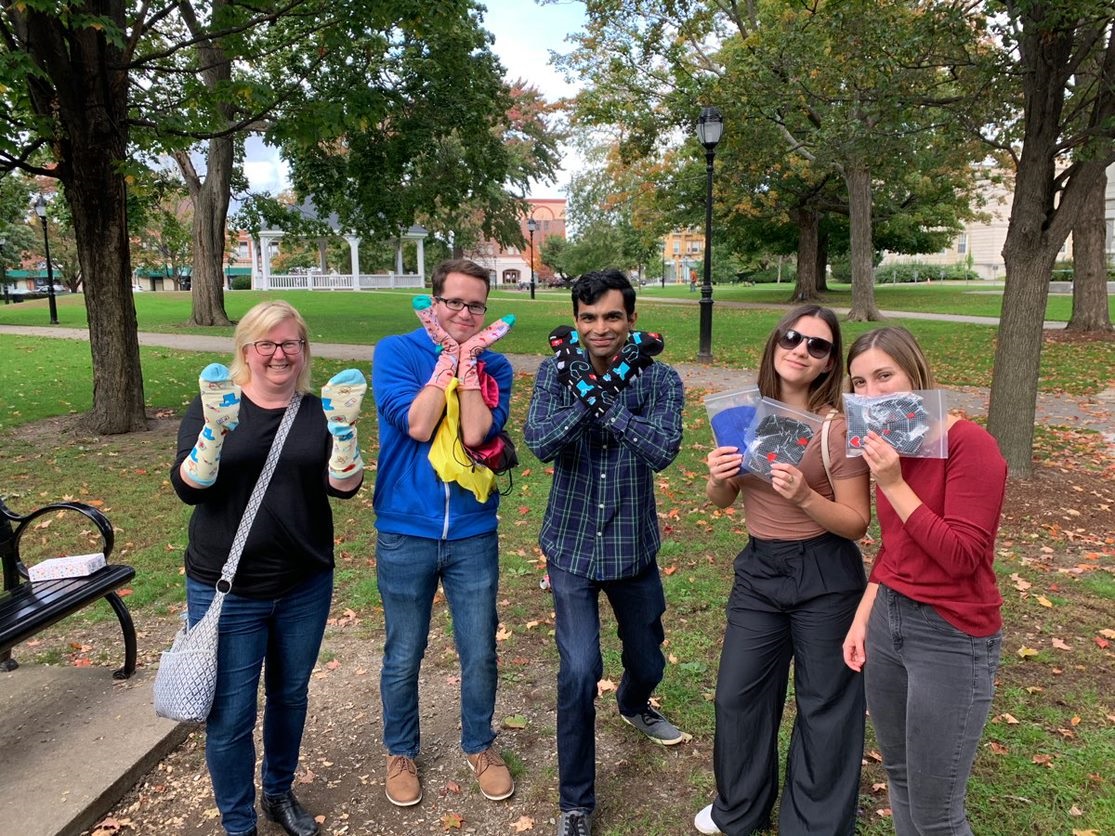10 Ways to Recover Your Team from Remote Work Burnout
When employees suffer from remote work burnout, they often have trouble concentrating, being productive and creative, or are thinking of leaving the company.
In the latest episode of the Team Building Saves the World podcast, Karrie Brazaski, speaker & virtual coach, described remote work burnout as a “million little burn pokes.”
Be sure to listen to the full episode to learn more about what remote work burnout is and how to identify it. You’ll also discover how promoting wellness and a positive culture can prevent remote work burnout among employees.
In the meantime, here’s our list of 10 effective ways to recover your team from remote work burnout.
1. Encourage Physical Activity
Remote work can lead to a lack of physical activity, especially when working from home.
Employees at home might not have the same motivation to get up and move around during the day as they would if they were taking a break outside of the office.
Many companies are now adopting wellness initiatives that help employees stay active and healthy while working remotely. Explore TeamBonding’s fun wellness team building activities for ideas on how to encourage your team to stay active and healthy while working from home.
2. Be Flexible with Schedules
Employers should encourage self-care in the workplace. There should be no shame in taking breaks, working out, or taking sick days when needed. The more care you show yourself, the more care you can show others around you. Employees should also be encouraged to take time off if they need to, whether it’s for mental health reasons or just to reset.
If your team needs to relax after a stressful day at work, consider treating them to an entertaining mediation experience. TeamBonding’s Meditainment activity brings your team together for guided meditations, relaxing soundscapes, and team strengthening.
3. Encourage Time Outside
Encouraging employees to incorporate physical activity into their day. This not only leads to a healthier lifestyle but can also prevent remote work burnout and help employees feel more engaged and productive at the same time.
Motivate your employees to get outside during the day. This could include going for a walk at lunch, getting some fresh air after a meeting, or going for a morning jog before they start working.
An excellent way to get teams outside and exploring is to try Healthcare Heroes Scavenger Hunt. By exploring your city and completing challenges, your team can help support your company’s corporate social responsibility goals by donating to healthcare workers.
4. Team Building Activities
One of the biggest challenges remote teams face is inclusivity. Because not all remote employees are able to work together on a daily basis, it can be challenging for them to feel like they truly belong to the team.
Team building activities for remote employees can help bridge that gap. These types of activities are designed to bring people closer together no matter where they are. People can share their experiences and showcase their personalities while having a good time.
5. Provide Therapy Opportunities
Virtual therapy sessions can be an effective way to help employees manage stress, overcome anxiety or depression and build healthier habits.
They can also help your team build their resilience. Virtual therapy sessions can also help your team build stronger connections and empathy.
6. Respect Boundaries
As workload continues to increase, managers often have a hard time respecting employees’ personal boundaries. Remote employees who have to work overtime may not be able to sustain that schedule indefinitely without burning out.
This is why more companies are starting to adopt work/life balance policies for their remote employees. A successful policy will not only increase employee engagement and reduce turnover but will help prevent remote work burnout.
In the podcast, Karrie says:
“You have to create the boundaries to be able to know when to turn it off and turn it on. As a leader, you’re setting the stage for the acceptable. You have to be even more on task of creating the boundaries so that you have that breakaway and that you have a life that people want to emulate.”
7. Encourage Remote Group Culture
Creating a workplace culture that values employee wellness can help employees feel more connected to each other and prevent remote work burnout in the long term.
TeamBonding’s Virtual Team Happy Hour & Mixology event is a fun way to help team members connect. This event merges a learning experience and an exciting opportunity to strengthen bonds. Everyone on your team will receive a kit with all the ingredients needed to create specialty cocktails.
8. Embrace Focus Time
Team leaders can set the standard for creative, productive workdays by establishing a standard focus time. During this time, employees are expected to avoid distractions and focus on their responsibilities for a certain period of time (e.g., two hours). After that period of time, they can take a break or do other things.
By setting certain times for meetings and blocking off time during the day for employees to work on projects, managers can help ward off the work from home burnout that comes with juggling different balls all day long.
9. Create a Team Hub
Creating a centralized employee resource hub is one effective way to cut down on wasted time and team frustration. This hub can host a variety of resources for the team, including onboarding documents, training materials, social media templates, and video guidelines.
This hub can also include a “wellness” section where employees can find curated resources for mental health care, work-life balance tips, and personal development opportunities.
There are many ways to create this resource hub — such as through a company network or knowledge database like Notion — but the important thing is to make it easily accessible for your team.
10. Acknowledge Success
If an employee has done a job well, tell them. You’d be surprised at how many managers don’t take time to acknowledge their staff when they have done something right. Saying, “I appreciate your great work,” can go a long way towards building employee satisfaction and engagement.
Karri states that employees want “worthwhile work and want to feel like they matter.”
“If I’m never told that I do a good job and if I’m never given any type of feedback, it leads to burnout. The other thing that’s coming more and more clear is people not being challenged…”
Keeping Teams Happy
Remote work burnout due to an increased workload is the primary reason why employees decide to quit their jobs. Taking proactive steps to ensure your employees are not overloaded with work can help improve your overall retention rates.
Don’t forget to listen to the entire Team Building Save the World podcast with Karrie Brazaski to learn more about remote work burnout and how to prevent it.
If your team is struggling to overcome remote work burnout, organizing a team building event could be a potential solution.
TeamBonding has decades of experience organizing highly engaging team building activities that help employees feel happier and more connected with other members of the team.
To learn more, explore our most popular events or contact us today and ask about event customization options.
Get more insights in our newsletter:
* every subscription supports charity!
Plays well with these activities.


 Unlock exclusive resources for better teams. Every subscription supports charity!
Unlock exclusive resources for better teams. Every subscription supports charity!
Create Your Free Account
Get exclusive access to new programs from the TeamBonding Lab, save your favorite ideas, and track your upcoming events.
Already have an account? Login










